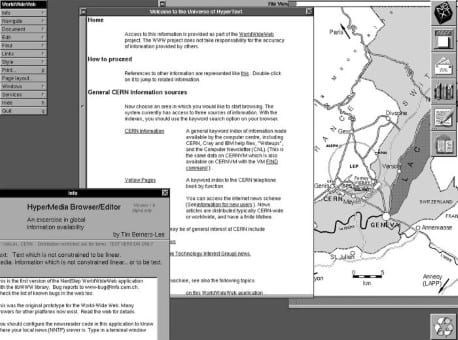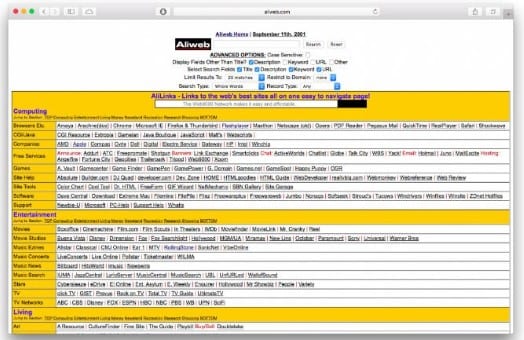Hosted by the World Wide Web (where “www” comes from) on Berners-Lee’s NeXT computer, the site was used internally by CERN scientists until the whole server was opened up to anyone with an Internet connection in August 1991. The website itself is like a ‘self-help’ guide to the web – it tells you how to access other people’s documents and how to set up your own server. In 2013, CERN made an effort to return it to its original address, and you can visit it here now, in stripped-down form. As Berners-Lee explained in his initial proposal for the World Wide Web project, clarity of words was more important than fancy graphics: “Where facilities already exist, we aim to allow graphics interchange, but in this project, we concentrate on the universal readership for text, rather than on graphics.”
There are now more than 4 billion webpages and just under a billion domains, but none are quite so special as the pages that started it all. Max Slater-Robins over at Business Insider has rounded up some of the key players, and let’s just say web design has come a long way since 1990. Produced by Martijn Koster at CERN in 1993, Aliweb was the world’s first search engine. While it allowed early web users to index their sites via keywords and written descriptions, it never really took off, and had a relatively short lifespan. You can still access it here.
You may like to know more about domains, FQDN(fully qualified domain name) and TLD(top level domain). Head to Business Insider to see more of the world’s first websites, including the first effort from the White House and Yahoo. Of course, no huge project is achieved without some lingering regrets, and for Berners-Lee, it’s those damned forward slashes. “Sir Tim has admitted that he shouldn’t have bothered putting two slashes after the HTTP: in URLs,” says Iain Thomson at The Register. But at least he hasn’t embarrassed himself by posting any dumb cat videos over the past 25 years of being online. “To this date, he’s never posted a cat picture online, although he did once send someone a picture of his dog,” says Thomson. Not only the story of its birth is the reason we are excited about WWW, the change it has brought in the world is more than remarkable . It is hard to imagine this much technical progress and development of “gadgets of future” without the involvement of world wide web. While new threats have also emerged out of this new aspect of computing, the connectivity offered is worth risk taking.

